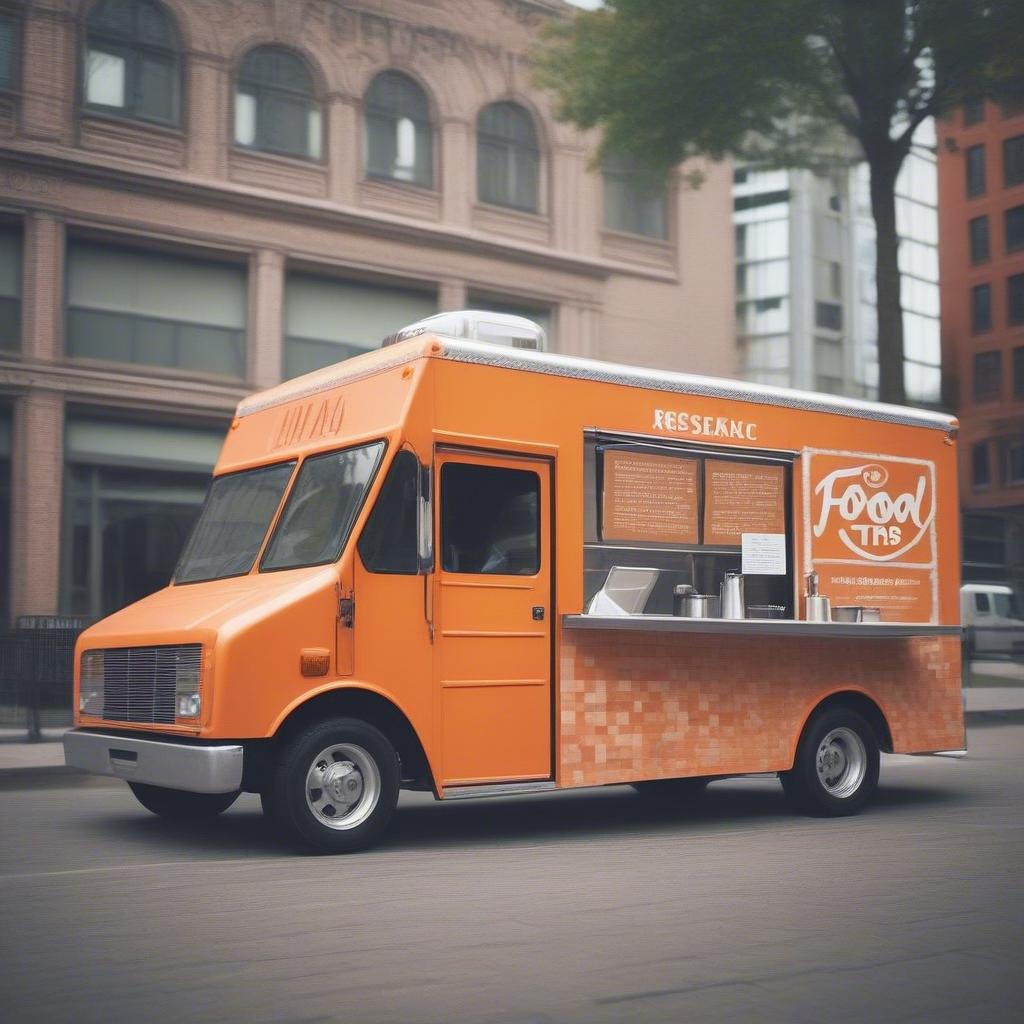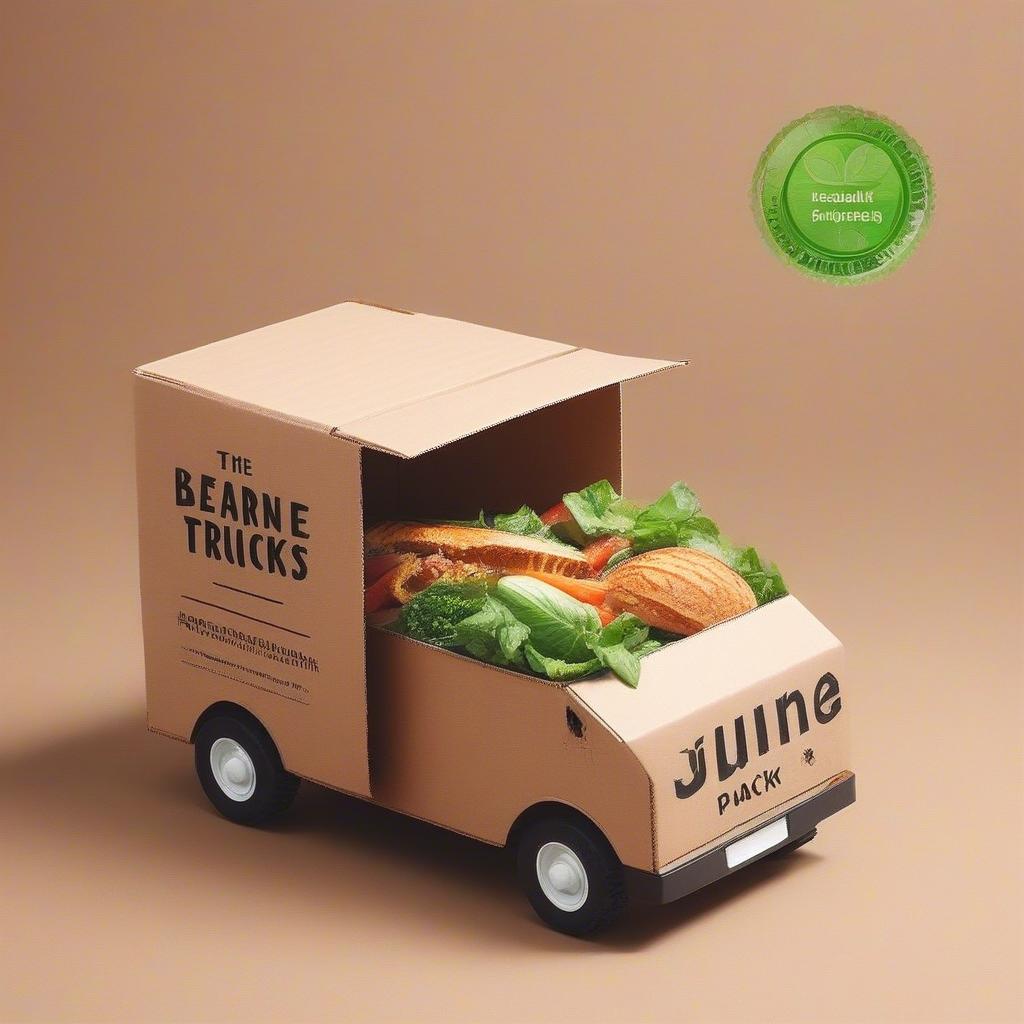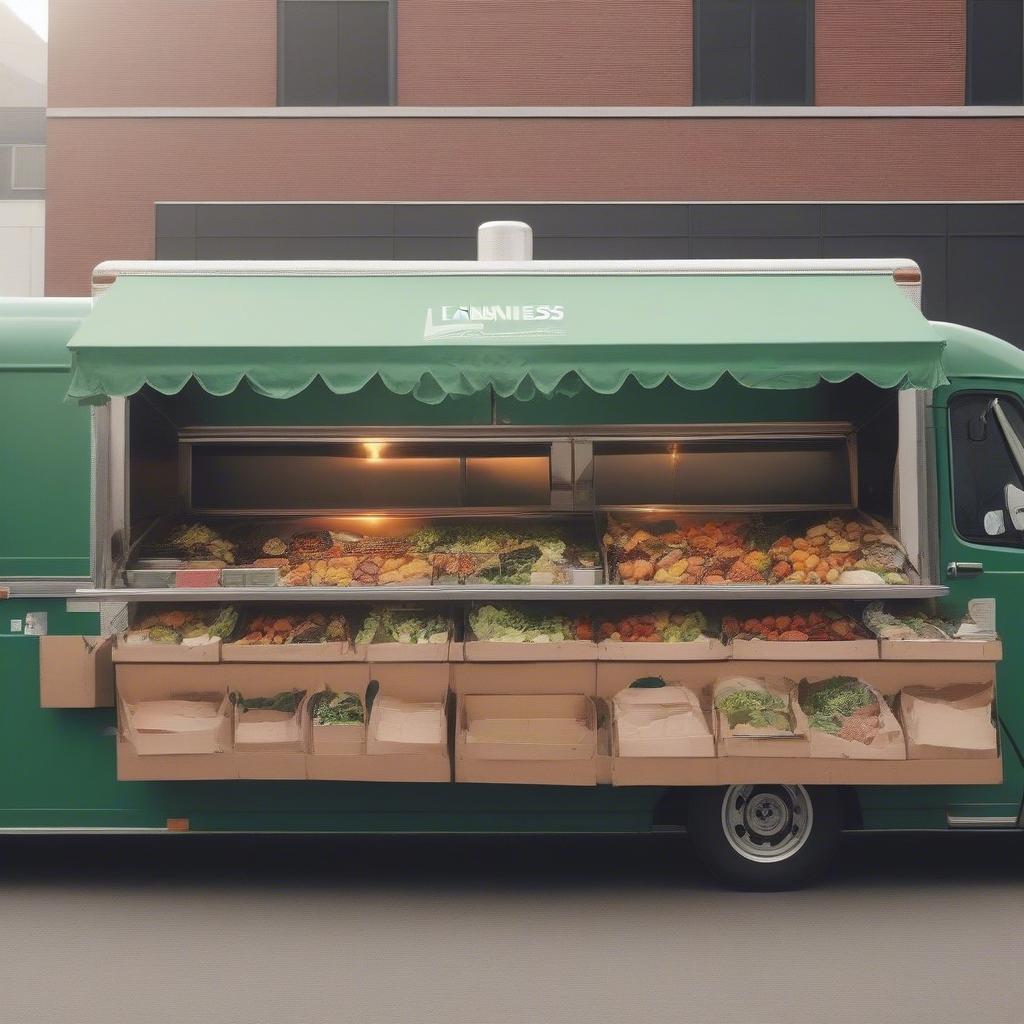
5 Research Tips for Starting a Food Truck Business
Dreaming of serving up culinary delights from a mobile kitchen? Starting a food truck business can be an incredibly rewarding adventure, blending passion with entrepreneurship. But before you fire up the grill, thorough research is absolutely essential. It’s the foundation upon which your mobile food empire will be built. Diving in without a solid plan is like trying to navigate a new city without a map – exciting, but likely to get you lost and frustrated. This guide, packed with years of experience (metaphorically, of course!), offers five crucial research tips for anyone considering launching a food truck venture. Let’s get cooking!
1. Market Research: Understanding Your Hungry Audience
Before you even think about truck colors or menu items, you need to know who you’re serving and what they crave. Market research isn’t just about collecting data; it’s about understanding your potential customers on a human level. Think of it as getting to know your neighbors before you host a block party.
A. Defining Your Target Audience
Who are you trying to reach? Are you catering to the lunchtime crowd, the late-night snackers, or a specific demographic? This is a crucial first step in your food truck research. Here’s how to drill down:
- Demographics: Age, income, occupation, location – all these factors shape food preferences and spending habits. Are you aiming for college students on a budget, busy professionals seeking quick lunches, or families enjoying weekend outings? For instance, a gourmet grilled cheese truck might focus on young adults and families, while a healthy salad bowl truck might target health-conscious professionals.
- Psychographics: This dives deeper into your target audience’s lifestyle, values, and attitudes. Are they adventurous eaters? Do they prioritize sustainability? Do they value convenience over price? Understanding their motivations allows you to craft a menu and brand that resonates with them on an emotional level. Someone seeking organic and locally sourced food might flock to a food truck that emphasizes these values.
- Existing Food Truck Landscape: What other food trucks are already operating in your desired area? What are they doing well? What are their weaknesses? Identifying your competition helps you find your niche and differentiate yourself. Don’t see many dessert food trucks? There’s a potential opportunity!
B. Assessing Local Demand
Is there a genuine need for your food truck concept in your chosen location? It’s not enough to assume there’s demand; you need proof.
- Location Analysis: Research high-traffic areas where your target audience frequents. Think parks, business districts, event venues, festivals, and farmers markets. Scout potential spots on different days and at different times to gauge the foot traffic. A location that is bustling on Friday night might be a ghost town on Monday morning.
- Competitor Observation: Spend time observing your competitors. What are their peak hours? What are their best-selling items? Are they consistently busy or experiencing lulls? Use this data to identify potential opportunities and gaps in the market. If one food truck is always sold out of tacos, consider if there’s room for you to specialize in a different Mexican offering.
- Survey and Questionnaires: Ask your potential customers directly! Use online surveys, social media polls, or even conduct brief in-person questionnaires to gather feedback on your menu ideas and pricing. You can use free tools like Google Forms or SurveyMonkey to facilitate this.
- Test the Waters: Before fully committing, try out your concept at a small event or market to gather real-time feedback and gauge customer response. This allows you to make tweaks and adjustments before investing heavily.
C. Identifying Trends & Preferences
Staying ahead of the curve is crucial in the fast-paced culinary world. Keep a pulse on current food trends and emerging preferences.
- Food Blog and Social Media Monitoring: Follow popular food bloggers, social media influencers, and relevant hashtags to identify trending dishes, ingredients, and flavor profiles. Instagram, TikTok, and food blogs can be goldmines for insights.
- Industry Publications and Reports: Subscribe to industry publications and reports to stay up-to-date on food trends, consumer behavior, and emerging technologies. This will give you a broader view of the market, rather than relying solely on local observations.
- Local Eateries and Markets: Explore local restaurants and markets to observe what’s popular in your area. What are people buying and eating? This can give you a sense of what might work well on your food truck.
2. Concept and Menu Development: Defining Your Unique Flavor
Once you’ve grasped your target market, it’s time to solidify your food truck’s concept and design a menu that’ll have people lining up. This isn’t just about putting food on a menu; it’s about crafting a brand experience.
A. Choosing Your Culinary Focus
What kind of cuisine will you offer? Your culinary focus will dictate everything from your equipment needs to your marketing strategy.
- Your Passion & Expertise: Start with your strengths. What food do you love to cook? What dishes are you naturally good at? Passion is essential for long-term success.
- Specialization vs. Variety: Will you specialize in one type of food (e.g., gourmet burgers, artisanal tacos) or offer a wider variety of options? Specializing can help you build a strong brand identity, while offering variety can attract a broader audience. Think about what makes the most sense for your target market.
- Dietary Considerations: Are you planning to offer vegetarian, vegan, or gluten-free options? Accommodating diverse dietary needs can significantly expand your customer base. Understanding the current food trends will help you decide if there is a niche that needs to be filled.
- Concept Alignment with Target Market: Ensure your culinary focus aligns with your target market’s preferences and needs. If you’re targeting health-conscious customers, a menu filled with deep-fried options probably won’t cut it.
B. Creating a Profitable Menu
A great menu is more than just delicious; it also needs to be profitable. This is often a sticking point for many starting food trucks.
- Cost Analysis: Calculate the cost of each ingredient for each menu item. Factor in labor costs, packaging, and other expenses to determine your ideal pricing.
- Pricing Strategy: Determine how much profit margin you need to make to sustain your business. Prices should be competitive yet profitable. Consider competitor pricing when deciding your costs.
- Seasonal Menus: Incorporate seasonal ingredients to keep your menu fresh and exciting. This can also help to reduce food costs when certain items are in season.
- Streamlined Menu: Keep your menu relatively focused and easy to manage. Having too many options can lead to increased food waste and longer wait times. It’s easier to manage a menu of 5 great dishes than a menu of 15 mediocre dishes.
- Signature Dishes: Identify a few standout dishes that will become your signature items. These are the dishes that will draw customers back again and again.
C. Menu Design & Presentation
The way your menu looks and how it’s presented is just as important as the food itself.
- Easy-to-Read Menu: Use clear fonts, concise descriptions, and a layout that’s easy for customers to understand at a glance. Make it large enough for people to read from a distance.
- High-Quality Photos: Include mouth-watering photos of your dishes on your menu and on social media. People eat with their eyes first.
- Branding: Your menu should reflect your food truck’s overall brand identity. Use consistent fonts, colors, and a logo that represents your style and brand.
- Digital Menus: Consider offering a digital menu via a QR code, particularly for online ordering and delivery. This can help with contactless ordering and flexibility in making changes.
3. Legal & Regulatory Research: Navigating the Red Tape
Starting a food truck involves more than just cooking and serving; there’s a whole layer of legal and regulatory requirements to navigate. This can seem daunting, but proper research will ensure you avoid costly mistakes.
A. Permits & Licenses
The specific permits and licenses required will vary depending on your location.
- Business License: You will likely need a general business license to operate legally. Look into local state/provincial business registration processes.
- Food Handler’s Permit: Anyone handling food in your food truck will likely require a food handler’s permit or food safety certification.
- Mobile Food Vendor Permit: You will need a specific permit for operating a mobile food vending business.
- Health Inspections: Be prepared for regular health inspections to ensure your truck meets safety standards.
- Zoning Regulations: Research local zoning laws to determine where you’re allowed to operate your food truck. Some areas might restrict parking or vending hours.
- Fire Safety: Ensure your food truck meets all local fire safety codes and has the necessary fire extinguishers and equipment.
B. Insurance Requirements
Protecting your business with adequate insurance is essential to safeguard you against potential risks.
- General Liability Insurance: This covers potential accidents or injuries that may occur on or around your truck.
- Commercial Auto Insurance: This is necessary to cover your vehicle and its operation.
- Workers’ Compensation Insurance: This provides coverage if one of your employees gets injured on the job.
- Product Liability Insurance: This can protect you from claims related to the food you serve.
- Consider Business Interruption Insurance: This insurance helps to replace lost income in the event that you are unable to operate your food truck due to unforeseen circumstances.
C. Understanding Food Safety Regulations
Ensuring food safety is paramount to protect your customers and maintain your reputation.
- Safe Food Handling Practices: Implement proper food handling practices, such as temperature control, hand washing, and cross-contamination prevention.
- Storage Requirements: Understand the specific storage requirements for different types of food to prevent spoilage and bacteria growth.
- Proper Waste Disposal: Follow local guidelines for proper waste disposal and grease management.
- Regular Training: Provide regular food safety training to all employees to ensure they are following best practices.
D. Other Legal Considerations
There may be other legal considerations to keep in mind.
- Contract Agreements: If you work with vendors or use external services (like payment processing), have proper contracts in place.
- Intellectual Property: Protect your brand name, logo, and other intellectual property.
- ADA Compliance: Ensure your truck is accessible for people with disabilities, such as wheelchair users.
4. Operations and Logistics Research: Streamlining Your Workflow
The behind-the-scenes operations of a food truck are just as important as the food you serve. Streamlining your workflow will improve efficiency and profitability.
A. Food Truck Acquisition
Whether you’re buying new or used, it’s a major investment. This is a huge part of starting food trucks; it can be a very daunting process.
- Buying New vs. Used: Evaluate the costs and benefits of buying a new or used truck. New trucks come with warranties but have a higher price tag, while used trucks may require maintenance.
- Truck Size and Layout: Choose a truck size and layout that fits your menu and operations. Consider the amount of space needed for equipment, storage, and staff.
- Equipment Checklist: Create a comprehensive checklist of all equipment you’ll need, from cooking appliances to refrigeration units. This is crucial during your food truck research.
- Customization: Think about any customizations you’ll need to make to the truck’s interior to fit your specific needs and workflow.
B. Inventory Management
Proper inventory management will minimize waste and ensure you have the ingredients you need on hand.
- Stocking and Ordering: Develop a system for ordering and stocking ingredients. This should be aligned to your sales patterns.
- FIFO System: Implement a first-in, first-out system to ensure you’re using the oldest ingredients first and minimizing spoilage.
- Supplier Relationships: Build strong relationships with reliable suppliers to secure competitive prices and timely deliveries.
- Inventory Tracking Tools: Use inventory management tools to track stock levels, monitor usage, and manage food costs.
C. Staffing and Training
Finding and retaining good staff is essential for a successful food truck operation.
- Hiring Process: Develop a thorough hiring process that includes interviews, reference checks, and potentially a practical skills assessment.
- Training Program: Implement a comprehensive training program to teach staff your recipes, procedures, and food safety protocols.
- Employee Management: Create a positive and supportive work environment to keep employees motivated and engaged.
- Scheduling and Payroll: Develop an efficient system for scheduling staff and processing payroll accurately.
D. Payment Processing
Choose a payment processing system that’s convenient for your customers.
- POS Systems: Invest in a reliable point-of-sale (POS) system to manage transactions, track sales data, and manage inventory.
- Credit Card Processing: Accept credit card payments, mobile payments, and other digital payment methods to cater to a variety of customers.
- Cash Handling: Implement secure procedures for handling cash to prevent theft and ensure accuracy.
- Online Ordering and Delivery: Consider integrating online ordering and delivery options to expand your reach.
5. Branding and Marketing: Building a Loyal Following
A strong brand and effective marketing are crucial to attracting customers and establishing a successful food truck business. This final component of food truck research is extremely important.
A. Defining Your Brand Identity
Your brand is more than just a logo; it’s the overall experience you offer to your customers.
- Unique Selling Proposition (USP): Identify what makes your food truck unique and communicate this clearly to your target audience.
- Brand Voice and Personality: Develop a consistent voice and personality that reflects your values and resonates with your target customers.
- Visual Identity: Create a cohesive visual identity that includes a logo, color scheme, typography, and design elements that are consistent across all your marketing materials.
- Brand Story: Share your story with your customers. This can help to create an emotional connection and build loyalty.
B. Developing a Marketing Strategy
Your marketing strategy should encompass a mix of online and offline tactics.
- Social Media Marketing: Use social media platforms like Instagram, Facebook, and TikTok to showcase your food, engage with your audience, and build a following. Regularly posting photos and video can make the difference between success and failure.
- Local Partnerships: Partner with local businesses, event organizers, and community groups to expand your reach and generate awareness.
- Loyalty Programs: Implement a loyalty program to reward repeat customers and encourage them to visit your food truck regularly.
- Email Marketing: Build an email list and send out regular newsletters to announce new menu items, promotions, and special events.
- Public Relations: Reach out to local media outlets and food bloggers to get your food truck featured in local publications and online platforms.
- Grand Opening Strategy: Plan a launch event to create excitement and build buzz for your new food truck.
C. Customer Engagement and Feedback
Engage with your customers, respond to their feedback, and show that you value their patronage.
- Respond to Reviews: Monitor online reviews on platforms like Google, Yelp, and social media and respond to both positive and negative feedback.
- Ask for Feedback: Solicit customer feedback to identify areas for improvement and refine your menu and services.
- Build Relationships: Build relationships with your customers to create a sense of community and foster loyalty.
- Special Events and Promotions: Run special events and promotions to engage your customers and create a sense of excitement.
How Learn Business Supports Your Food Truck Journey
Starting a food truck is an exciting undertaking, but it involves numerous challenges. At Learn Business, we understand that navigating these challenges can be overwhelming, which is why we provide support to businesses just like yours! We offer a range of resources specifically tailored to small business needs, including templates and guidance. We help you focus on what you do best – creating amazing food – by supporting all the other areas of running a business.
Here are some of the ways Learn Business can support you:
- Business Plan Templates: We offer customizable business plan templates that can help you articulate your vision, set goals, and plan your operations. No need to start from scratch; our templates streamline the process of developing a comprehensive business plan.
- Financial Planning Tools: Our financial planning tools can help you manage your finances, budget effectively, and track your profitability. Accurate financial planning is vital for the longevity of any business.
- Marketing Plan Templates: We provide a range of marketing plan templates to help you develop a comprehensive marketing strategy and promote your food truck effectively. You’ll be able to plan your online presence, local partnerships, and build your brand.
- Legal Document Templates: We have legal document templates, including contract templates, to help you safeguard your business and ensure compliance. Having access to these can save time and money on legal costs.
- Ongoing Support: Our team of experienced business mentors offers personalized guidance and support to help you overcome challenges and achieve your business goals. We’re more than just templates; we’re a resource and partner for your success.
Starting a food truck business is a challenging but incredibly rewarding journey. By taking the time to conduct thorough research, you’ll be well-equipped to launch a successful and sustainable venture. From market research to concept development, legal compliance to marketing strategies, the five tips provided in this article will help you lay the groundwork for your mobile culinary dream. Remember, planning and preparedness is key to navigating the exciting path ahead. And with Learn Business by your side, you’ll have access to the tools and guidance you need to make your culinary dreams a reality. Good luck and happy cooking!



Leave a Reply